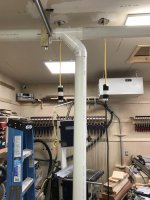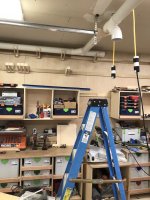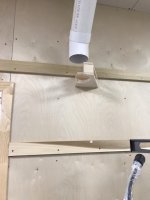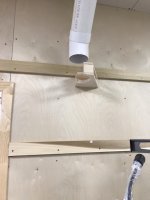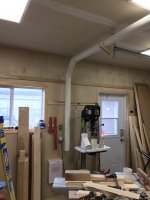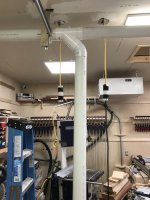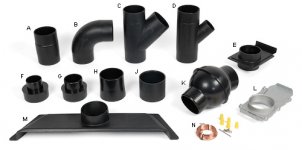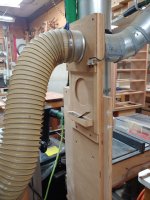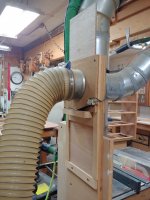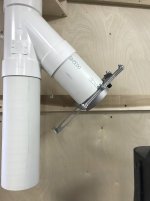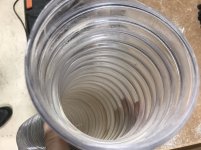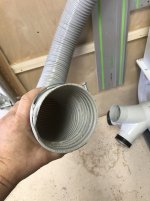Mario Turcot
Member
- Joined
- Nov 26, 2017
- Messages
- 1,288
Open to suggestion**
I start working on my dust collection system last weekend. I was tired of tripping on the flex hose that was running on the floor that connects on the table saw and band saw.
Everything start on that corner. Pipes are supported on French cleat. I'm using 45deg avoiding straight 90deg.
[attachimg=1]
I know my bag is full [tongue]
Here I capped one end and switch directly to the table/band saws. Those tools are in the middle of the shop and both mobile.
[attachimg=2]
Please disregard the plastering. I had a friend that came to help last summer and he offer to do it. It didn't last long before I asked him to move on something more important [eek]
First question, I have to put two blast gates or else for the two tools. Because the tools are mobile what height should I put them?
[attachimg=3]
Again disregard the plastering [embarassed]
The pipes is supported here on the garage door rails. Not nice but effective [big grin] Here is the last drop for the drill press and a floor sweep.
[attachimg=4]
and another picture of where the drill press blast gate for the drill press will be.
[attachimg=5]
There is no glue on the pipes yet. I was planning to use alum duct tape for easy removal, once I'm totally done. I am looking for a cad file for blast gate that I can run on my CNC, something similar to
[attachimg=6]
Any comment and suggestion is welcome.
I start working on my dust collection system last weekend. I was tired of tripping on the flex hose that was running on the floor that connects on the table saw and band saw.
Everything start on that corner. Pipes are supported on French cleat. I'm using 45deg avoiding straight 90deg.
[attachimg=1]
I know my bag is full [tongue]
Here I capped one end and switch directly to the table/band saws. Those tools are in the middle of the shop and both mobile.
[attachimg=2]
Please disregard the plastering. I had a friend that came to help last summer and he offer to do it. It didn't last long before I asked him to move on something more important [eek]
First question, I have to put two blast gates or else for the two tools. Because the tools are mobile what height should I put them?
[attachimg=3]
Again disregard the plastering [embarassed]
The pipes is supported here on the garage door rails. Not nice but effective [big grin] Here is the last drop for the drill press and a floor sweep.
[attachimg=4]
and another picture of where the drill press blast gate for the drill press will be.
[attachimg=5]
There is no glue on the pipes yet. I was planning to use alum duct tape for easy removal, once I'm totally done. I am looking for a cad file for blast gate that I can run on my CNC, something similar to
[attachimg=6]
Any comment and suggestion is welcome.


